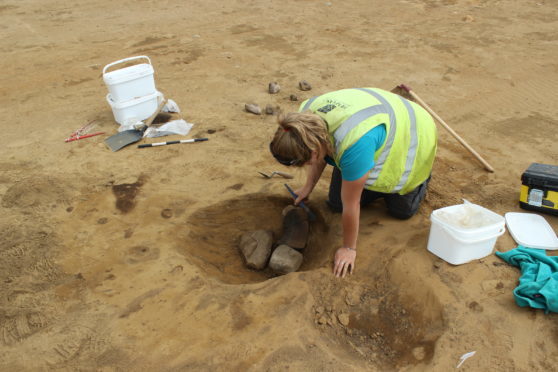Archaeologists have been left stunned after unearthing new evidence of Roman army activity in the north-east and an “unprecedented” collection of ancient artefacts and structures dating back to 13,000BC.
Experts said the excavations undertaken during the construction of the Aberdeen Western Peripheral Route (AWPR) had “pushed back our understanding of human activity in north east Scotland by several thousand years”.
Key finds made during the bypass work include evidence that hunter-gatherers were producing stone tools at Milltimber between 13,000 and 10,000BC.
Also at Milltimber, 90 bread ovens were found, dating from around 83/84 AD and thought to be linked to the Roman army invasion led by General Agricola.
A structure from around 7,000BC was unearthed at Standingstones, in the hills to the west of Dyce, while a Bronze Age roundhouse and cremation complex was identified at Nether Beanshill, dating from about 1,600 to 1,250BC.
Other highlights include a well-preserved Beaker pot found at Milltimber as well as a hub of Iron Age activity at Goval dating from the first and second centuries AD.
Bruce Mann, archaeologist for Aberdeenshire and Aberdeen City Council, said some of the finds “raise more questions than they answer about what we thought we knew about the north east”.
He added: “These archaeological finds provide real insight into the history and culture of the north east. They are impressive in both time depth and the range of activities represented.
“They push back known human activity in the region by at least 2,000 years, add new detail to how our ancestors lived and died and reveal a new dimension to Rome’s invasions of Scotland.”
Work on the 28-mile AWPR is nearing completion but a question mark remains over the £745 million route’s opening date following the collapse of the construction firm Carillion.
Economy Secretary Keith Brown said: “When complete, the AWPR will help to reduce congestion, cut journey times, improve safety and lower pollution in Aberdeen city centre.
“The archaeology has proven to be yet another huge benefit from this project, helping to shine a light on Scotland’s ancient past.
“The discoveries along the AWPR route would have remained undiscovered had the new bypass not been built. They are truly remarkable.”
A limited edition book detailing the archaeological project is to be published later in the year.
